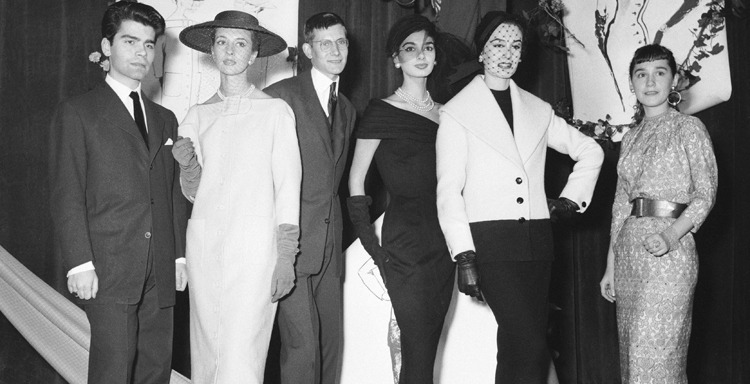The Australian wool industry has the fashion market knitted up. For years the classic image of the rugged Aussie sheep shearer was successfully used to sell Merino wool to the world. But times have changed. Now top-name designers are being ushered in to regenerate the image of Woolmark, Australia’s industry leaders in wool.
2008 was the 200th anniversary of the arrival of the first bale of Merino wool in Europe from Australia. To celebrate this birthday, a prestigious award has been reborn.
The recent trend towards hand-crafted, natural clothing has prompted the revival of the Woolmark Prize with top-tier names judging young fashion designers in an initiative sponsored by the Australian industry.
The prize has enjoyed an illustrious history since its beginning in 1954. Donna Karan, Ralph Lauren, Romeo Gigli, Dolce & Gabbana and Giorgio Armani are just some of the former winners in the Woolmark hall of fame.
Back in the 1950s, Karl Lagerfeld, then 21, was winner of the coat category, while Yves Saint Laurent, 19, won the award for dress design. This year, Donatella Versace, Calvin Klein and Paul Smith were enlisted to mentor 10 young guns as part of Project Protégé with the up-and-coming designers making their collections from Merino wool.
The 2008 winner of the Protégé Prize was Shanghai-based Qui Hao who beat nine international competitors. The designer will receive industry support to the value of about $170,000 to source material as well as in production, presentation and promotion of one of his collections. Qui Hao’s work will also be sold exclusively in Collette, the high-end boutique store in Paris.
The 30-year-old designer made his catwalk debut in 2006 after he opened his own fashion house in Shanghai in October 2005. Following his award, the former student of London’s Saint Martins College plans to move to Paris.
Qui Hao’s win reflects the shifting of the Aussie wool industry focus towards Asia’s largest market. China, afterall, is a major trader with Australia, in fuel and natural resources, so why not wool?
“Arguably the best wool for high-end fashion is grown in Australia,” says the Australian Wool Industry’s chief executive Craig Welsh. “Already Australian wool is the only fibre that can verify the origin of the wool garment and its quality.”
Wool exports were the dominant factor in the Australian economy until the end of World War II.
Recent improvements in export values have been achieved in part by the recognition that the sheer quality and ever-finer fibres of Australian Merino wool can out-compete any other natural fibre in the world.
However, there may be tough times ahead. In a worrying sign for the industry, Australian wool production is predicted to decline in the 2008/9 season due to droughts.
More positively at a Sydney auction in June, a new record was set for Merino wool sold at auction. A bale was bought for $2,690 per kilogram by Raymond Limited, the world’s largest manufacturer of worsted fabric.
The industry has now pledged to spend more than $120 million over the next three years on boosting the international profile of Merino Wool. Welsh insists that wool has successfully outlasted polyester and other synthetic fads. “Durability will stand wool in good stead in a society that is trying to shed the ‘consumer or throwaway society’ name.”
As part of another initiative, Australian Wool Innovation announced its support for emerging local designers with the L’Oréal Melbourne Fashion Festival Designer Award presented by Woolmark. The 2008 winner was Friedrich Gray, the Sydney-based label designed by Ben Pollitt that’s renowned for its neo-gothic aesthetic. He won a $10,000 cash prize and a trip to Europe where he’ll be introduced to the best spinners, knitters and mills in the world from the most prestigious names in Italy’s textile industry including Cerruti and Ermenegildo Zegna.
“It’s great to see these upcoming designers utilizing one of Australia’s most valuable resources, Australian Merino wool, as part of their seasonal collections.” Welsh says.
